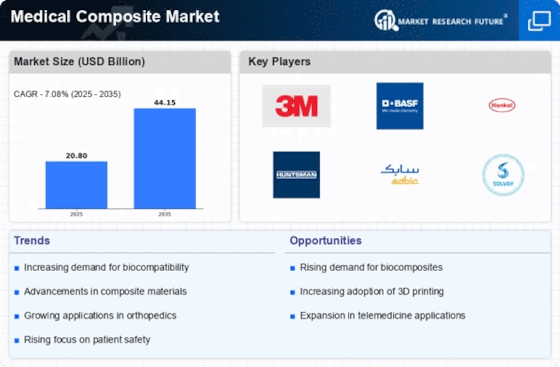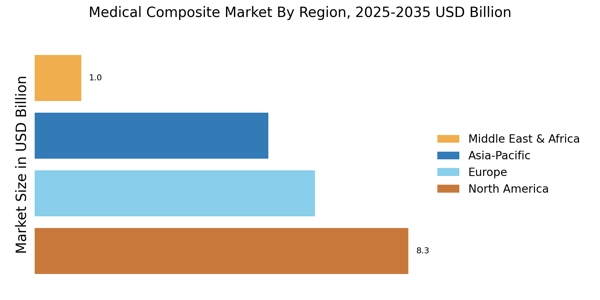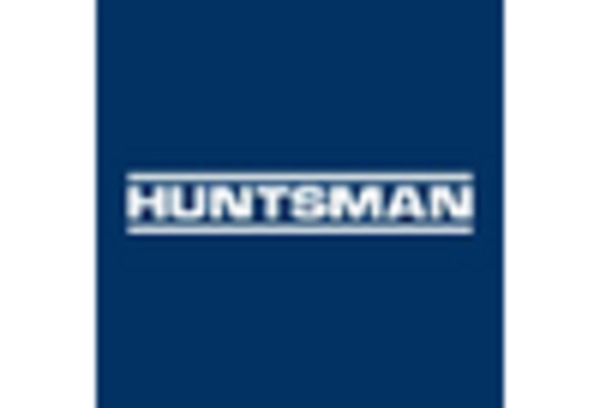Rising Demand for Biocompatible Materials
The Medical Composite Market is experiencing a notable increase in demand for biocompatible materials. This trend is largely driven by the growing awareness of the benefits associated with using materials that are compatible with human tissues. As healthcare providers and patients alike prioritize safety and efficacy, the preference for biocompatible composites is likely to rise. In 2025, the market for biocompatible composites is projected to reach approximately 2 billion USD, reflecting a compound annual growth rate of around 8%. This shift towards biocompatibility not only enhances patient outcomes but also aligns with regulatory standards, thereby fostering growth within the Medical Composite Market.
Growing Focus on Minimally Invasive Procedures
The Medical Composite Market is benefiting from the increasing emphasis on minimally invasive surgical techniques. These procedures often require specialized composite materials that can provide strength while minimizing tissue damage. The shift towards less invasive options is not only improving patient recovery times but also reducing overall healthcare costs. As a result, the market for composites tailored for minimally invasive applications is projected to grow at a rate of 6% annually through 2025. This trend underscores the importance of innovation in the Medical Composite Market, as manufacturers strive to meet the demands of modern surgical practices.
Increasing Applications in Orthopedic Implants
The Medical Composite Market is witnessing a surge in applications related to orthopedic implants. The demand for lightweight, durable, and biocompatible materials in orthopedic surgeries is propelling the growth of composites specifically designed for this sector. In 2025, the orthopedic implant segment is anticipated to account for over 30% of the total medical composite market share. This trend is indicative of a broader shift towards innovative solutions that enhance surgical outcomes and patient recovery times. As orthopedic procedures become more prevalent, the Medical Composite Market is likely to expand in response to these evolving needs.
Advancements in Composite Manufacturing Techniques
Innovations in manufacturing techniques are significantly influencing the Medical Composite Market. Advanced methods such as 3D printing and automated composite layup are enhancing the precision and efficiency of composite production. These advancements allow for the creation of complex geometries that were previously unattainable, thus expanding the application range of medical composites. For instance, the integration of additive manufacturing is expected to contribute to a market growth rate of 7% annually through 2025. As these technologies evolve, they are likely to reduce production costs and improve the scalability of composite materials, further driving the Medical Composite Market.
Regulatory Support for Advanced Medical Composites
Regulatory bodies are increasingly supporting the development and use of advanced medical composites, which is positively impacting the Medical Composite Market. Initiatives aimed at streamlining the approval process for new composite materials are encouraging manufacturers to invest in research and development. This regulatory support is crucial, as it not only facilitates faster market entry for innovative products but also enhances consumer confidence in the safety and efficacy of these materials. By 2025, it is expected that regulatory frameworks will continue to evolve, further promoting growth within the Medical Composite Market.


















Leave a Comment